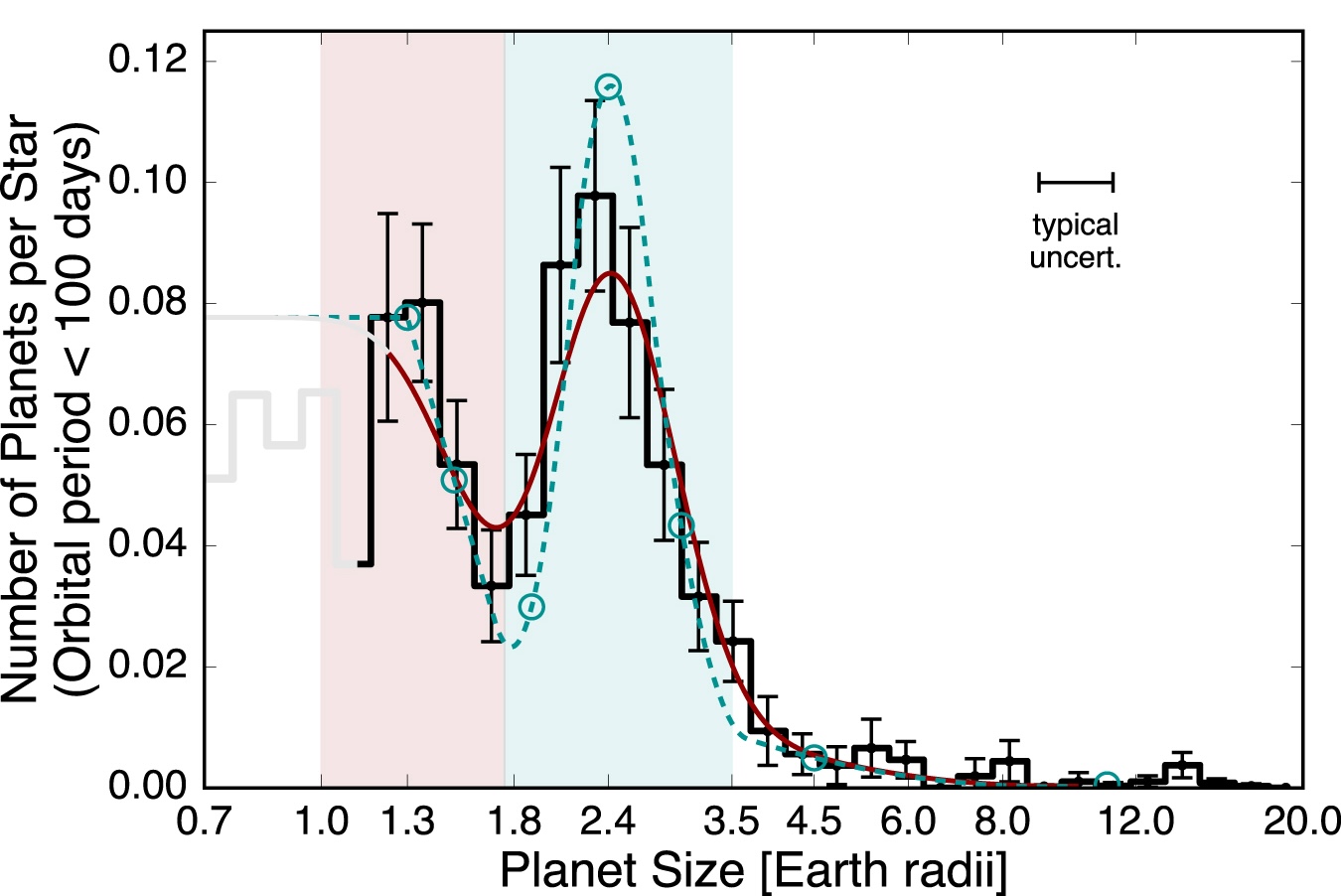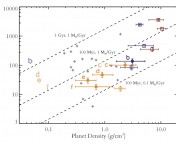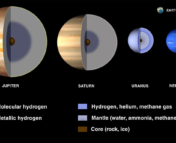Title: Scaling K2 VII: Evidence for a high occurrence rate of hot sub-Neptunes at intermediate ages
Authors: Jessie L. Christiansen , Jon K. Zink, Kevin K. Hardegree-Ullman, Rachel B. Fernandes, Philip F. Hopkins , Luisa M. Rebull, Kiersten M. Boley, Galen J. Bergsten, and Sakhee Bhure
First Author’s Institution: NASA Exoplanet Science Institute (NExScI), Caltech
Status: Published in The Astronomical Journal [open access]
Exoplanets come in all shapes and sizes. Some are large and gaseous, like Jupiter or Neptune, while others are small and rocky, like the Earth. Curiously, there seems to be a lack of a certain size of planet – those that are 1.5 – 2 times the size of Earth’s radius – and no one is sure why. Since we can detect exoplanets of sizes above and below this radius range, this dearth of planets is not likely due to a detection bias, but rather some physical mechanism at play. Astronomers believe that planets that form in this intermediate size range have a hard time holding onto their atmospheres and shrink due to some mass loss mechanism. The authors of today’s papers investigate which mechanism is the most likely culprit for this observed phenomenon.
Mind the (radius) gap
Since the first detection of an exoplanet in 1992, the number of confirmed exoplanets has been increasing astronomically. Now astronomers have detected enough planets (5,599 and counting) to try to understand the underlying distributions between different populations of planets. When plotting the radius distribution of planets detected by the Kepler Space Telescope, Fulton et al, 2017 found that the radius distribution of small planets is bimodal– that is, there are two distinct peaks corresponding to two different planet populations, known as super-Earths and sub-Neptunes, and few planets in between them (see Figure 1). Super-Earths are rocky planets with sizes around 1.5 times that of Earth, while sub-Neptunes are gaseous planets, similar in composition to Neptune, but with radii between 2 and 3 times the size of Earth. The scarcity of planets between these two populations, between 1.5 – 2 times the size of Earth, is often referred to as the “radius gap” or “radius valley”, where the occurrence rate of known exoplanets is much lower than expected.

The cause of this radius valley is still an unsolved mystery. Many astronomers believe that planets that form in this valley aren’t massive enough to hold on to their gaseous outer layers, causing them to shrink over time until they are left with only their rocky cores. The two dominating theories for what causes this atmospheric loss are photoevaporation and core-powered mass loss. In the photoevaporation scenario, planets of this size have their gaseous atmospheres almost entirely stripped away by the high energy radiation given off from their host star. This process is predicted to occur in the first 100 million years following the planet’s formation. On the other hand, the core-powered mass loss scenario predicts that the energy generated from the planet’s own core as it cools propagates to its outer layers and blows away its atmosphere if it is not initially massive enough to hold onto it. This process happens much longer, taking a whopping 0.5 – 2 billion years to complete. Both theories have a lot of compelling evidence, so which is more likely? In order to address this question, the authors of today’s paper turn to NASA’s K2 mission.
Photoevaporation or core-powered mass loss?
While NASA’s Kepler space telescope was originally designed to observe just one patch of the sky, its high precision pointing began to fail in 2013, causing it to stray away from its original field of view. Luckily, it was able to be repurposed into the K2 mission, where it instead began to observe stars along the ecliptic plane. Its new field of view contained the Praesepe and Hyades star clusters, two populations of stars between 600 million and 800 million years old. Because planets are roughly the same age as their host stars, astronomers were able to detect a large number of planets old enough to experience photoevaporation, but not old enough to have undergone core-powered mass loss. The authors looked for sub-Neptune sized planets in these two clusters (i.e. the planet population just above the radius valley) and predicted that if they observed a high occurrence rate of sub-Neptunes, they can conclude that photoevaporation could not be the leading cause of this mysterious mass loss.
And that is exactly what they observed. As shown in Figure 2, the occurrence rate of sub-Neptunes is 79%–107% for stars in the Praesepe cluster. This occurrence rate is much higher than the occurrence rate of ~20% for sub-Neptunes around field stars (i.e., stars not associated with a cluster), which can be much older. This result is also consistent with a previous result from clusters observed by TESS, where they found a fractional occurrence rate of ~100% for sub-Neptunes that were roughly 50 million years old. If photoevaporation were the driving mechanism of mass loss, the occurrence rate of sub-Neptunes should be closer to that of field stars, since their atmospheres would have been completely stripped by this age.

So, does that mean core-powered mass loss is the mechanism that is guilty for stealing these planet’s atmospheres and causing this radius valley? Perhaps! But the jury is still out. While this result does leave core-powered mass loss as the more favorable mass-loss mechanism, there may be many more possibilities we haven’t yet considered. The picture is still incomplete, but this research gives us a little more insight into what happens to small planets as they evolve.
Astrobite edited by Junellie Gonzalez Quiles
Featured image credit: Wikimedia Commons + Edits by Tori Bonidie




